
.
.
| RETURN TO AMERICA 11 November to 26 December 1918 |
| 21 November - Operation ZZ Internment of the German High Seas Fleet |
 |
|
Appearance during the internment The internment plan of the German High Seas Fleet to Firth of Forth, Operation ZZ, dated 20 November 1918, was signed by Admiral Beatty aboard the British battleship HMS QUEEN ELIZABETH. TEXAS was not involved in the subsequent 27 November movement to Scapa Flow . At 0055, on 21 November, TEXAS began preparation to get underway by cutting in boiler #11. (Four boilers were already in use). The nine remaining boilers were cut in with the last one, #5, at 0325. TEXAS was underway at 0335. Even though the armistice was signed 10 days prior, a torpedo defense watch was set at 0400. At 0445, both paravanes were deployed. TEXAS was sailing eastward on a course of 90 degrees with the Grand Fleet to meet the westbound German High Seas Fleet. On the north wing of the the Grand Fleet was the 6th Battle Squadron with flagship NEW YORK, in the lead then TEXAS ARKANSAS, FLORIDA and WYOMING, . At 0618, the navigation mark of May Island was passed. At 0845, HMS CARDIFF was sighted leading the German High Seas Fleet and the Grand Fleet changed course to compass heading 270 (due west). At 1056, the ships passed May Island. At 1408, TEXAS passed Oxcars Gate, in the Forth of Forth, and set anchor at 1418. At 1530 HMS QUEEN ELIZABETH stood in and TEXAS rendered honors and cheered Admiral Beatty. During the internment operation, TEXAS sailed 186 miles while underway for 10 hours and 43 minutes. |
 |
| Diagrams of allied ship arrangement. TEXAS is the second ship in line in the 6th Battleship Squadron (on the left side) |
 |
 |
| 1 December - Departs for Portland, England |
| On December 1st, at 1130, all hands were called to quarters for farewell ceremonies incident to the US ships leaving the British Grand Fleet, for Portland, England. At 1146, TEXAS got underway and hoisted a "Homeward Bound" pennant. At 1250 paravanes were placed over the side. The US ships were shortly met by 16 destroyers and the 4 British battleships of the 5th Battle Squadron as an escort to May Island. BARHAM (flag) and MALAYA were on the starboard (south) with VALIANT and WARSPITE on the port (north). At 1355, the British ships turned back to Firth of Forth. Cheers were exchanged with all British ships as the two groups passed each other. TEXAS arrived in Portland, on the 4th. | |
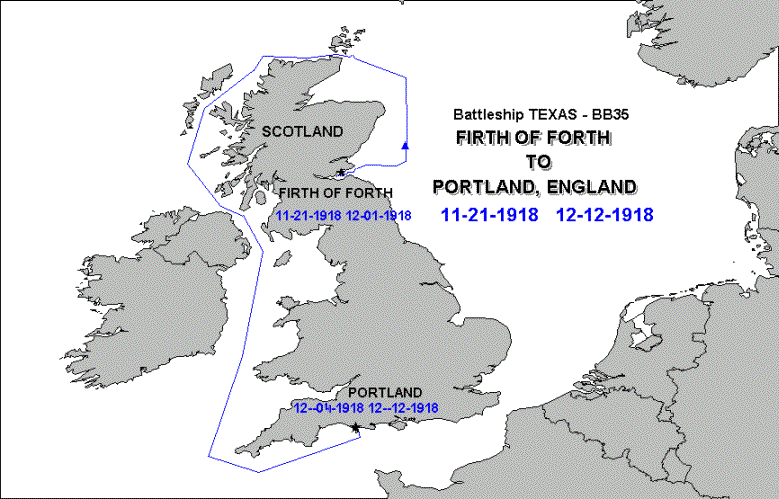 |
|
| , | |
| Jim comes aboard |
| During this period, TEXAS acquired another mascot, by the name of Jim. His 6-year-old English owner, Mr. Lloyd Adams, gave him to the ship. His Uncle Randolph, a Captain in the Veterinary Corps, brought Jim home from Flanders. Mr. Adams provided the photo, in 1999. |
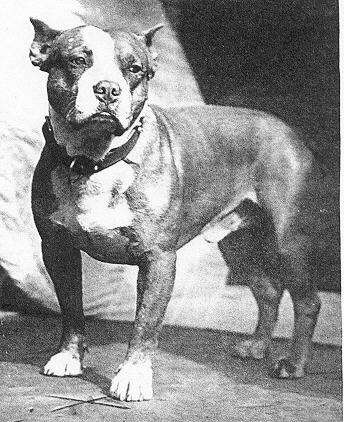 |
| 12 December - Escort President Wilson to France |
| n the evening of 12th, TEXAS and the rest of the squadron departed Portland
to rendezvous with President Wilson, aboard the GEORGE WASHINGTON. Intercepting the presidential party in the morning of the 13th, the fleet entered Brest, France, at 12:30 PM. |
I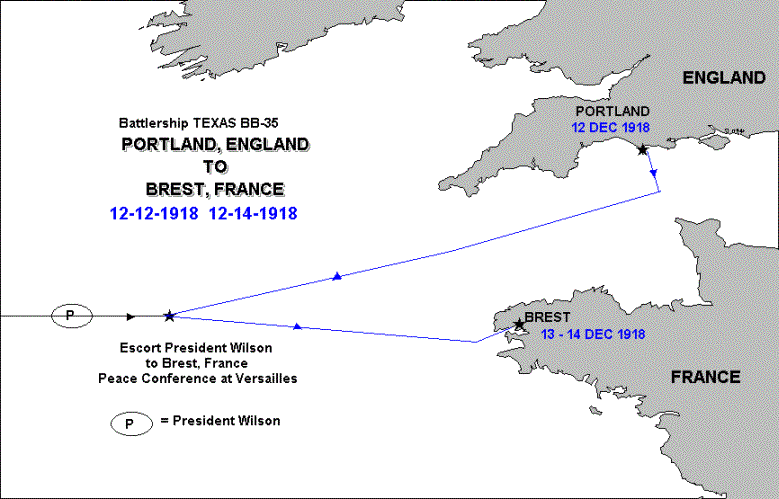 |
| 14 December - Departs for America | ||
| On 14 December, with a homeward bound pennant flying from the mainmast, TEXAS and the rest of the fleet sailed from Brest, France headed for New York City. (TEXAS did not stop in Portland, England during the return).
The return trip went via the Azores, which added 400 additional miles to the trip vs a straight line from Brest to New York City. Travel time for the return trip was 11.03 days, at an average speed of 13.61 knots while over the last five days, the avg. speed was 11 to 12 knots. When TEXAS left Brest, France for the return to America, three airplanes were aboard. From other photos, the airplanes were two Sopwith Camels and possibly a partially disassembled Sopwith 1 ½ Strutter atop Turret 3. TEXAS was also transporting a few passengers, including Lt. Commander Edward O. McDonnell. He was the pilot of the first flight off of an American battleship (TEXAS), on 10 Mach 1919, at Guantanamo Bay, Cuba. Photo during the 1918 return to America with a Sopwith Camel atop of turret 2.from the BB35 book "North Sea Days" |
||
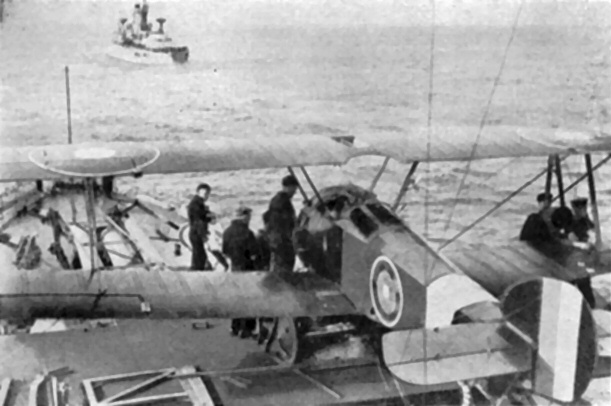 |
||
In New York City, 26 December 1918 - 4 January 1919 before dry docking in New York Navy Yard
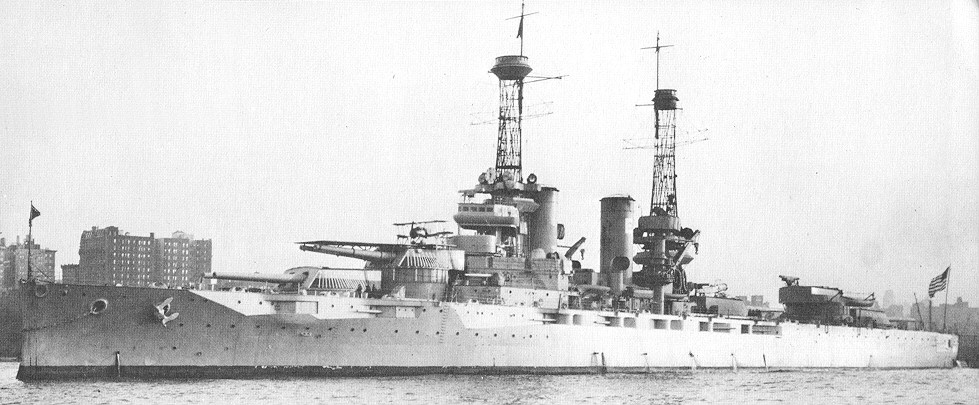 |
.
Started 11 May 1999 Chuck Moore, FTV (1st Texas Volunteers) BB35 volunteer group